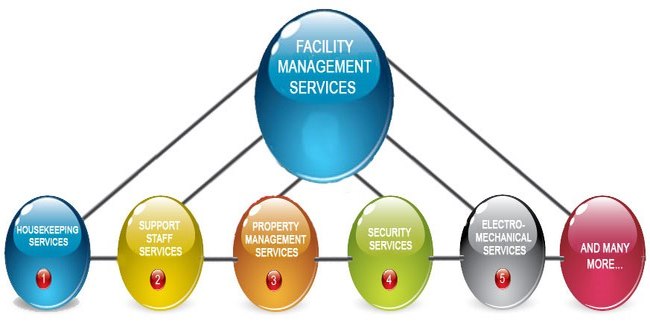Ideal Practices for Streamlining Facility Management Processes and Protocols
The Important Overview to Facility Administration: Approaches for Success
Facility monitoring plays an important function in the general success of a company, working as the backbone that supports performance, safety and security, and efficiency. By using calculated methods such as integrated technical services and fostering cross-departmental cooperation, organizations can significantly boost their operational structures. The nuances of reliable facility monitoring prolong past mere logistics and call for an extensive understanding of both qualitative and measurable metrics. As we discover these vital techniques, a closer examination exposes just how they can transform not simply facilities, however the actual culture within a company itself. What might these transformations appear like in practice?
Understanding Facility Administration
What makes up reliable center monitoring? Effective facility management encompasses the sychronisation of different business features to ensure that built settings are risk-free, efficient, and for productivity. Facility Management. It integrates the principles of design, design, and service management to develop a smooth functional circulation within an organization
Crucial element of facility monitoring consist of area preparation, maintenance management, and compliance with health and wellness guidelines. Area planning concentrates on maximizing the usage of physical sources to support organizational objectives, while upkeep administration guarantees that facilities are maintained in ideal condition, making the most of lifespan and reducing functional expenses. Compliance with lawful and regulative requirements is important, as it safeguards the organization versus prospective liabilities and boosts its track record.
Furthermore, reliable center monitoring counts on the strategic use technology, such as Structure Administration Systems (BMS) and Computer-Aided Center Monitoring (CAFM) devices. These innovations help with real-time surveillance of building systems and streamline upkeep processes. Eventually, an extensive strategy to facility monitoring not only advertises operational performance but likewise promotes a favorable environment for visitors and staff members alike, driving general business success.
Key Methods for Optimization
Optimizing facility monitoring requires a calculated approach that lines up functional practices with organizational purposes. To achieve this, the very first vital strategy is the application of incorporated technological services. Making use of advanced software systems enables for real-time surveillance of facility operations, assisting in data-driven decision-making and boosting overall effectiveness.
Second of all, normal assessments of facility efficiency are crucial. Conducting routine assessments and audits makes it possible for facility managers to identify areas that require renovation, making certain that resources are assigned efficiently. This positive strategy aids in minimizing downtime and enhancing service shipment.
One more important approach is cultivating cooperation throughout divisions. By urging open interaction in between groups, center supervisors can much better straighten their approaches with business objectives, bring about improved functional harmony. In addition, involving team in training programs advertises a society of responsibility and enhances their capacity to add to optimization initiatives.
Enhancing Safety And Security Methods
Reinforcing safety and security methods is crucial for developing a safe and secure setting within centers. A detailed security procedure not only protects staff members and visitors yet likewise improves operational performance. To attain this, facility managers have to perform routine risk analyses to recognize prospective risks and ensure that appropriate actions are in place.
Educating and education are crucial parts of efficient safety methods - Facility Management. Workers should obtain ongoing training in emergency situation treatments, equipment handling, and individual protective actions. Routine drills, such as fire evacuations or lockdown treatments, foster familiarity and readiness among team
Furthermore, clear interaction channels have to be established to report safety and security issues promptly. This includes developing an easily accessible platform for workers to articulate prospective threats or events without anxiety of . Additionally, leveraging modern technology can enhance precaution; as an example, implementing monitoring systems and accessibility controls helps check facility activities and limit unapproved entry.
Last but not least, compliance with regional laws and industry requirements is non-negotiable. Routine audits and testimonials of safety procedures make website sure placement with present legislations and ideal practices. By prioritizing these methods, facility managers can cultivate a culture of security that shields all stakeholders and inevitably check here adds to the organization's success.
Improving Workplace Environment

Ergonomic considerations are important to reduce physical stress and discomfort. Facility Management. This involves offering adjustable furniture, proper lighting, and adequate room for activity. These changes can bring about minimized absence and boosted task fulfillment
Aesthetic appeals play a crucial function in shaping the workplace atmosphere. Making use of shade psychology, natural lighting, and greenery can cultivate a stimulating and inviting setting. Thoughtfully developed spaces can enhance creative thinking and enhance more info overall well-being.
In addition, urging worker engagement via comprehensive decision-making processes can boost the feeling of ownership and belonging. Collecting comments on workplace renovations and including employees in the layout procedure can lead to a more customized setting that meets their demands.
Finally, promoting wellness initiatives, such as health cares and leisure rooms, can further add to an encouraging office society. By concentrating on these approaches, facility managers can properly boost the office atmosphere, driving both worker contentment and business success.
Measuring Success in Facilities
Measuring success in facility administration calls for an extensive strategy that evaluates both qualitative and quantitative metrics. Measurable metrics typically include vital performance indications (KPIs) such as area application rates, energy usage, maintenance prices, and occupancy levels. These metrics provide a clear image of functional performance and economic performance, enabling center supervisors to recognize areas for renovation and criteria against market criteria.
Qualitative metrics, on the other hand, concentrate on customer complete satisfaction and worker involvement. Surveys and responses mechanisms can evaluate exactly how well the centers fulfill the needs of passengers, assisting to examine the total workplace setting. This element is important, as a completely satisfied labor force is usually connected to raised performance and retention prices.
To successfully gauge success, center supervisors must also think about incorporating innovation, such as developing administration systems and data analytics tools, to gather and assess relevant information. Regularly reviewing both collections of metrics allows for a much more balanced sight of efficiency and educates calculated choices. Ultimately, a successful facility management method rests on a dedication to continuous enhancement, making sure that both functional performances and user complete satisfaction are focused on.
Conclusion

Center management plays an essential role in the total success of an organization, serving as the foundation that supports security, performance, and productivity.Trick elements of facility administration consist of room preparation, maintenance administration, and conformity with wellness and safety and security regulations.In addition, effective facility administration relies on the tactical use of modern technology, such as Structure Management Systems (BMS) and Computer-Aided Facility Administration (CAFM) tools. Eventually, a thorough approach to facility management not only promotes operational effectiveness however likewise promotes a positive environment for visitors and workers alike, driving general organizational success.
Eventually, a successful facility management technique hinges on a commitment to continuous renovation, ensuring that both functional performances and customer contentment are focused on.